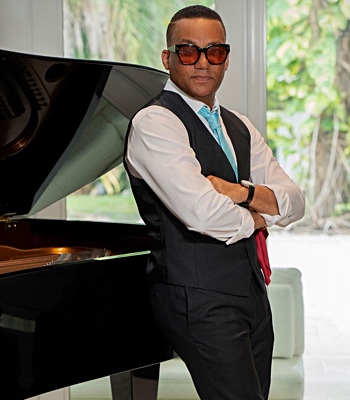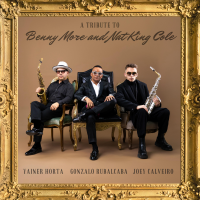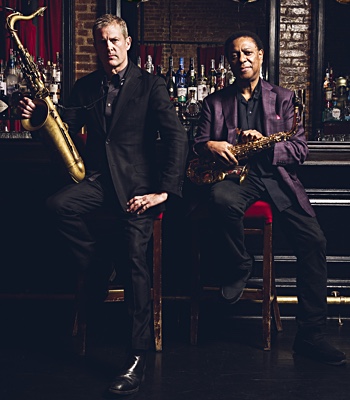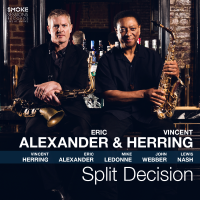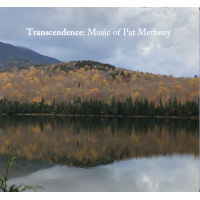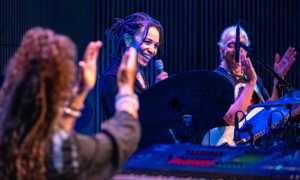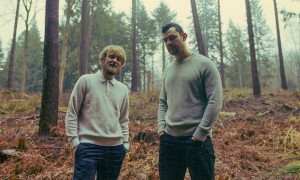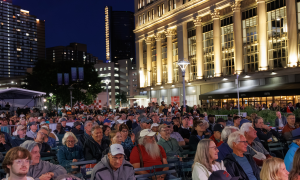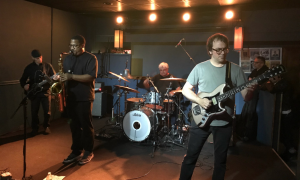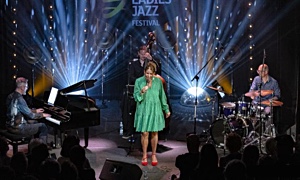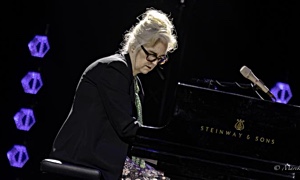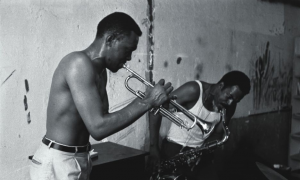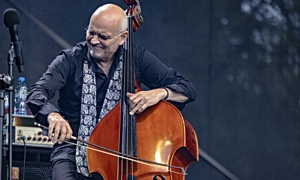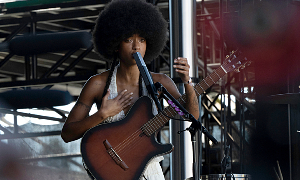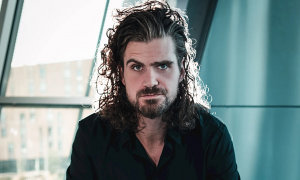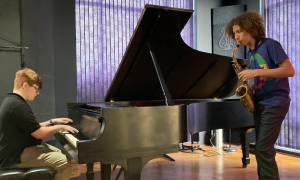Home » Jazz Articles » Live Review » David Binney Quartet at L'Astral in Montreal, May 13, 2010
David Binney Quartet at L'Astral in Montreal, May 13, 2010
L'Astral
Montréal, Canada
May 13, 2010
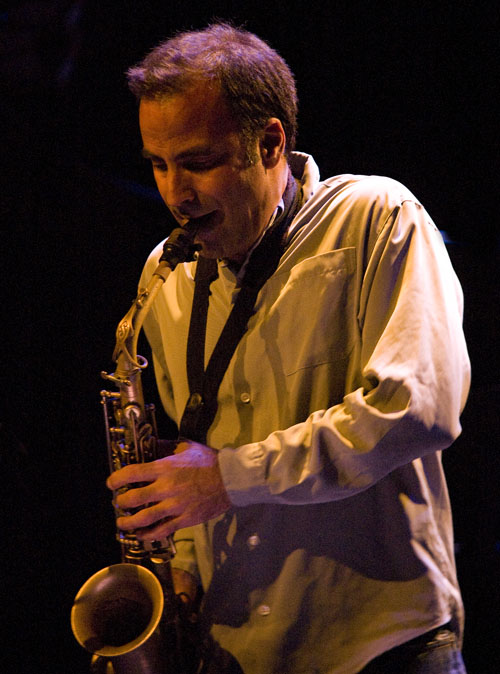 For one night, saxophonist David Binney brought a little taste of the 55 Bar to Montréal's L'Astral, courtesy of the Festival International de Jazz de Montréal. Mind you, as much as the well-known New York club acts as a regular performance space for Binney, and a laboratory for new music and new collaborations, it's hard to imagine it matching L'Astral, a venue opened during the 2009 FIJM in its new Maison du Festival, the home it's needed for many years. Seating about 350 people and with open sight lines everywhere, its generous stage and outstanding sound has already made it a highly respected venue—a reputation that's matched by the festival's remarkable commitment to making it a year-round jazz club with its Jazz All Year Round series, presenting an average of 15 shows each month since inception.
For one night, saxophonist David Binney brought a little taste of the 55 Bar to Montréal's L'Astral, courtesy of the Festival International de Jazz de Montréal. Mind you, as much as the well-known New York club acts as a regular performance space for Binney, and a laboratory for new music and new collaborations, it's hard to imagine it matching L'Astral, a venue opened during the 2009 FIJM in its new Maison du Festival, the home it's needed for many years. Seating about 350 people and with open sight lines everywhere, its generous stage and outstanding sound has already made it a highly respected venue—a reputation that's matched by the festival's remarkable commitment to making it a year-round jazz club with its Jazz All Year Round series, presenting an average of 15 shows each month since inception.
For his May 13, 2010 performance, Binney brought a couple of younger yet now relatively longtime collaborators. Pianist Jacob Sacks and drummer Dan Weiss have been playing together for fifteen years, since meeting in New York when Sacks relocated there from Michigan at the age of eighteen. The two also play together in Weiss' trio, heard most recently on the not-surprisingly cross-cultural and interpretively deep Timshel (Sunnyside, 2010), and one of the Montréal show's most compelling aspects was being able to truly feel both the profound, joined-at-the-hip musical connection between the two of them (and the entire quartet for that matter), not to mention the fun they were clearly having.
Binney also recruited bassist Zack Lober, a Montréal expat who has been living in New York for five years and is part of a collaborative quintet called The Story, which released its self-titled debut independently in 2009. Lober has been a fixture on the Montréal scene, performing with artists including pianist John Roney and the Doxas brothers (saxophonist Chet and drummer Jim), and while he may be a relatively recent collaborator with Binney and his other band mates, he was as deeply into the music as any of them, no small challenge given the inherent complexity of some of Binney's writing.
While Binney's credentials as a player have never been in question, not since he emerged in the mid-1990s in Lost Tribe—a prescient group that also kick-started the careers of guitarists Adam Rogers and David Gilmore—his albums, and his reputation, have focused more on his distinctive approach to writing. He may not be known to the larger jazz fan base as well as he should, but amongst many musicians he's become an influential touchstone, with an unmistakable ability to create challenging yet accessible environments for improvisation that are memorable for their serpentine melodies, open-ended yet structurally clear constructs and harmonically distinctive contexts. In performance, however, there's a more equitable balance between Binney the writer and Binney the improviser.
With only three songs in each hour-long set—announced at the start of the set, almost as if, while clearly aware of the audience, the intent was to get that out of the way so the band could just focus, and play—there was no shortage of solo space for everyone, and what became immediately evident the moment the band launched into the first tune (an untitled original), was that this was a group comfortable in its own skin, with an engendered trust that allowed it to go wherever it wanted without fear. This music was all about risk, but was all the more engaging for the clear confidence each player had that, no matter what they did, no matter where they went, the rest would be there to either push them farther or, very occasionally, rope them back in.
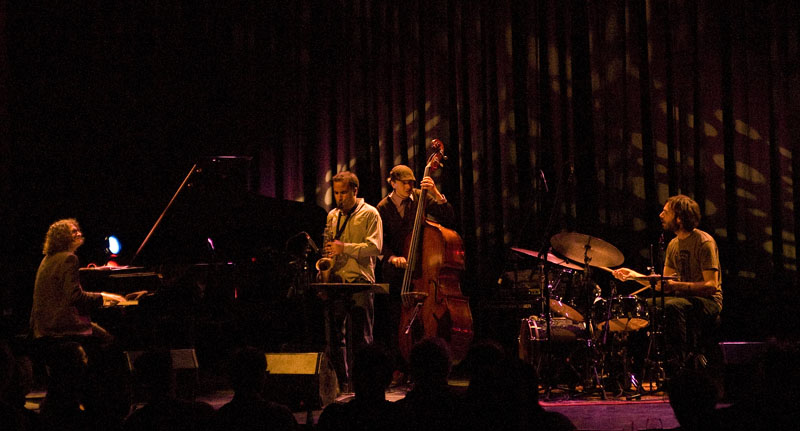 From left: Jacob Sacks, David Binney, Zack Lober, Dan Weiss
From left: Jacob Sacks, David Binney, Zack Lober, Dan Weiss
The six pieces, opening original aside and another unrecorded tune called "Simple Vibe," were culled from recent albums, including the quirky, shifting bar lines of "PF" and fierier "Gesturecalm," from Bastion of Sanity (Criss Cross, 2005), an extended look at the darkly balladic "Here's All the Love I Have," from The Third Occasion (Mythology, 2009), that went to more jagged and powerful places than the original, and the more immediate yet still left-of-center funk of the title track to Aliso (Criss Cross, 2010).
Everyone shone. Weiss took the first solo of the night when, after quickly dispensing with the melody, the opening untitled tune went into a lengthy ostinato that allowed him to demonstrate the very flexibility that has placed him in increasing demand amongst artists including guitarists Rez Abbasi and Joel Harrison, saxophonist Rudresh Mahanthappa and Canadian expat bassist Chris Tarry. Fluid, and with an unorthodox ability to make the entire kit flow seamlessly as if it were one instrument rather than a collection of many, Weiss' solos also reflected his longstanding Indian studies (his Tintal Drum set Solo (Chhandayan Production, 2005) a literal—and remarkable—transcription of a classical Indian piece for tabla to a conventional drum kit), but even more impressive than his solos was his ensemble work. It's almost coy to pick up on someone else's motif and echo it; another, however, to be so in synch as to feel it coming or pick up on it almost instantaneously, and then extend it into another space. Weiss often magically caught small figures, but there was nothing coy about how he integrated them in his own approach to time that was highly pliant, and often built into a greater whole with his band mates like a delicate house of cards.
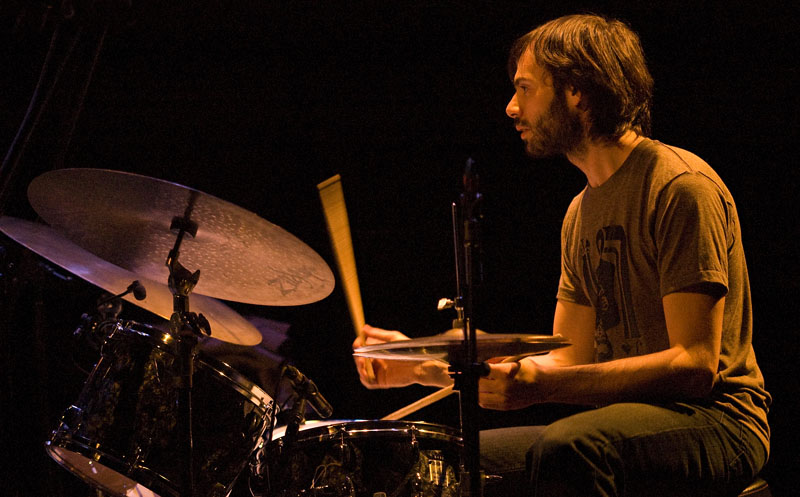
Lober, who took a lengthy opening solo on "Simple Vibe" that was a combination of lithe muscularity and unexpected harmonic shifts, possessed a particularly percussive tone that worked exceptionally well with Weiss and the rest of the group. Like his band mates, eye contact was paramount, and an unmistakable aspect to how the group communicated, with the smallest gesture often suggesting much more. As a longtime participant of FIJM's jam session trio, it's equally clear how much he's grown from his time spent playing and studying in New York.
Sacks is another player who deserves to be heard by a larger audience. A perfect match for Weiss' temporal elasticity, he's a profoundly rhythmic player, even as his ability to displace time is surprising, even on what is considered by some to be a "rhythm section instrument." The truth is that with Binney's group, it stops being about mere accompaniment, becoming more about a collaborative paradigm that may feature one instrument at times, but moves forward with a collective will. Despite unmistakable moments of virtuosic greatness, the most compelling aspect to Sacks' playing was how much it was about the ensemble, with what he didn't play often as important as what he did. Moving from slightly off-kilter elliptical patterns to longer motifs that were as rhythmic as they were melodic, he played with rare invention and intuition.
Binney's credentials as a player have never been in question, despite his unmistakable strength as a writer, but in solo after solo he proved that sometimes the best material is that which pushes the writer to move out of his comfort zone. Whether building long, repeated patterns, demonstrating subtle strength with multiphonics or incredible cascades of notes that almost seemed to overlap despite the inherently linear nature of his alto, Binney may have left the stage often to leave the rest of his band mates to go where they wanted, but his presence was constantly felt...and a constant reminder of just how important he is, whether or not his name ever reaches the level of household status.
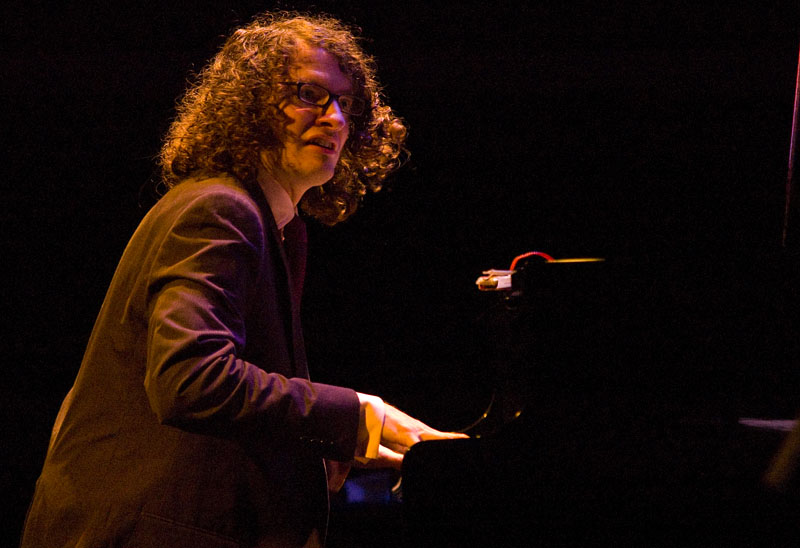
A relatively short encore provided the only cover of the evening—Wayne Shorter's relatively obscure "Toy Tune," recorded on Aliso, an anomaly in Binney's discography, containing, as it does, more material by others than original compositions. It was a great way to close off the set by acknowledging how the iconic spirit of artists like Shorter continues to loom large, even with artists whose focus is on their own music. Based on the near-capacity crowd's enthusiastic response —and for some this was a first encounter, but clearly won't be the last—there's no small likelihood that Binney could well be considered in the same category in the years ahead.
Photo Credit
All Photos: John Kelman
Tags
Comments
PREVIOUS / NEXT
Support All About Jazz
 All About Jazz has been a pillar of jazz since 1995, championing it as an art form and, more importantly, supporting the musicians who make it. Our enduring commitment has made "AAJ" one of the most culturally important websites of its kind, read by hundreds of thousands of fans, musicians and industry figures every month.
All About Jazz has been a pillar of jazz since 1995, championing it as an art form and, more importantly, supporting the musicians who make it. Our enduring commitment has made "AAJ" one of the most culturally important websites of its kind, read by hundreds of thousands of fans, musicians and industry figures every month.





